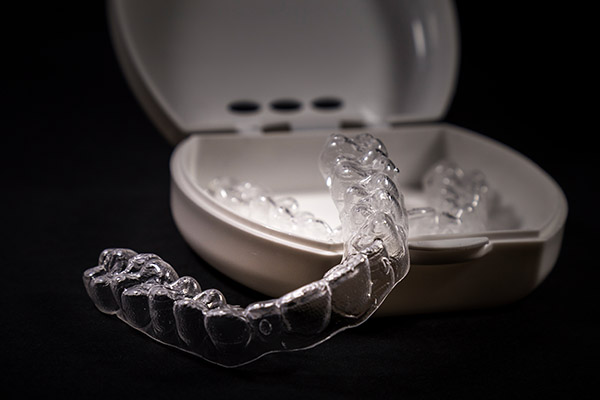 Invisalign® is a breakthrough orthodontic technology that uses a series of transparent aligners to enhance the look of crooked, overlapping, and gapped teeth. If you are considering using Invisalign for your orthodontic treatment, you may be curious about how often you would have to go for checkups and what happens during those appointments. Continue reading learn more about Invisalign and what to anticipate during your follow-up visits.
Invisalign® is a breakthrough orthodontic technology that uses a series of transparent aligners to enhance the look of crooked, overlapping, and gapped teeth. If you are considering using Invisalign for your orthodontic treatment, you may be curious about how often you would have to go for checkups and what happens during those appointments. Continue reading learn more about Invisalign and what to anticipate during your follow-up visits.
Why Invisalign checkup appointments are important for treatment progress
To ensure that treatment is going correctly, all patients will need to go for routine Invisalign checkups. During these follow-up visits, the dentist might adjust the treatment plan to keep everything on track. Follow-up visits are usually required every four to eight weeks. These meetings are usually brief and often span only about 15 minutes.
What happens during a typical checkup?
While undergoing Invisalign treatment, patients will need to see the dentist often to get new trays. The teeth will gradually shift into their optimum position throughout the treatment as patients advance to newer trays. The progress will stop if they fail to switch to new trays. Those month-old aligners will have no impact since they have already moved the teeth to the next point.
Also, the dentist still needs to monitor the patient’s progress to ensure that no modification is necessary for the upcoming aligner. Sometimes, patients may need to wear their aligners may for longer or shorter periods than anticipated. In these instances, the dentist can check and advise patients on the required adjustments. Without the dentist’s input, treatment may not progress according to plan, causing a setback.
Oral checkup and teeth cleaning
It is still necessary to see the dentist regularly to maintain good dental health. Gum disease and cavities are best detected during a routine oral examination. In addition, frequent dental checkups usually involve a thorough cleaning by a hygienist, who will help eliminate plaque buildup and keep the teeth clean.
In reality, orthodontic devices may make routine dental care a bit more challenging, although clear aligners make things easier. This implies that regular dental appointments are even more essential now than ever. The dentist will need to check that the patient is cleaning their teeth properly and that cavities are not forming in hard-to-reach areas.
Checkups after completing Invisalign treatment
Although Invisalign checkups end when patients have used their last tray, these follow-up appointments are necessary. The dentist will provide a retainer after treatment. It is critical to follow the instructions for using the retainer.
Retainers, as the name suggests, preserve the position of the newly aligned teeth. Invisalign checkups, in this case, are to make sure the patient is wearing their retainers and that the teeth are maintaining their new positions. If patients fail to use their retainer or miss these visits, the teeth may revert to the state that the treatment corrected.
The bottom line
The treatment duration will determine the number of follow-up visits. As previously stated, a typical 12-month treatment plan will mean 6 to 12 follow-up visits, or about one appointment per month or every other month. The dentist will discuss the Invisalign treatment plan during the consultation.
Request an appointment or call Highlands Family Dentistry at 214-491-5362 for an appointment in our Dallas office.
Related Posts
Invisalign® is often the preferred choice for patients looking to straighten their smiles without the hassle of getting metal braces. If you have been avoiding teeth straightening because you are worried about people noticing metal brackets and wires on your teeth, Invisalign could be the perfect choice for you. Continue reading to see how you…
Are you considering Invisalign® treatment? Read on to learn about some of the benefits of opting for this teeth-straightening treatment. According to the American Dental Association, teeth straightening is more than just for cosmetic purposes; it may help your overall oral health. While conventional metal braces are still widely used, modern technology has enabled the…
Invisalign® aligners can effectively correct many dental alignment issues like crooked, misaligned, or protruding teeth. Invisalign is a popular alternative to metal braces and uses plastic aligner trays to straighten teeth. These clear plastic trays (aligners) are custom-made by a dentist to fit tightly over the teeth and gradually shift crooked teeth into the correct…
